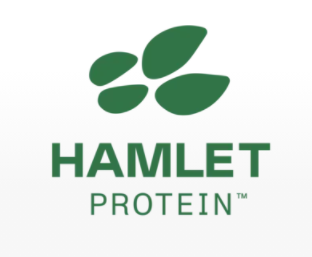



How to prepare your feed strategy for 2021
What challenges and opportunities should be on your radar in the year ahead? At Hamlet Protein, we’ve put together a checklist for the feed industry.The ability to adapt at speed has been key to business survival during a year overshadowed by a harrowing pandemic. Supply chains have been interrupted, travel severely restricted and millions of working people required to stay at home. The closure of food service outlets has dramatically altered the purchasing behaviour of consumers.
Although the animal feed industry has proven to be comparatively resilient through the COVID-19 crisis, few have escaped the impact on feed prices and earning potential. Reduced meat sales in hotels and restaurants, for example, have a direct knock-on effect on the farming business. Add to that pre-existing issues, such as African swine fever and the growing pressure to reduce antibiotics and zinc oxide in feed, and you have a complicated cocktail of challenges.
To build opportunities in volatile times, there’s nothing to beat looking ahead and being well prepared. Here at Hamlet Protein, we’ve flagged three factors that anyone with a stake in the feed industry should have on their radar in 2021.
Animal diseases
As long as effective vaccinations are not globally available, animal diseases will disrupt supply chains. African swine fever has disrupted the global pork supply chain for some years and, with China now on the road to recovery, is now of rising concern in Germany, Poland and other parts of Europe. Likewise, avian flu will continue to be a concern for poultry producers.
Bio-security measures and good farm management practices can reduce the risk. However, in 2021, the impact on feed volumes and meat prices will be felt in markets around the world.
COVID-19
The current pandemic and risk of other pandemic outbreaks will continue to affect the feed industry in 2021. This will require ongoing implementation of procedures and training to prevent the spread of COVID-19 among employees and avoid related breakdowns in production and service levels.
The impact of COVID-19 on the processing capacity of packers will continue to drive price levels and earning potential. Highly consolidated markets such as the USA are most vulnerable, due to the relatively greater impact of a COVID-19 outbreak on production.
From a consumer perspective, the pandemic has accelerated interest in how food is produced along with the demand for more sustainable production, animal welfare and antibiotic-free meat. Feed producers should prepare to adjust their supply chain to meet these market demands.
Market volatility
Commodity pricing is expected to drive feed costs up in 2021, the outcome of market volatility created by COVID-19 and African swine fever. Higher corn and soybean meal prices pose a particular challenge, but may be mitigated by a corresponding rise in the price of meat, milk and eggs.
Global companies that supply feed for multiple species have a built-in buffer for managing the shifting demands of various markets and species-specific diseases. Local feed and animal protein producers, however, are likely to feel the effect of currency fluctuations on their ability to compete and sell into export markets. In general, the industry is likely to undergo further consolidation.
How to prepare for the challenges ahead
As we see it, the main challenges for feed formulators over the next 12 months boil down to:
- Reducing antibiotic usage in response to legislative and consumer demand
- Eliminating zinc oxide from feed in response to upcoming bans, such as in the EU from 2022
- Managing costs in response to shifting ingredient prices and demands on diet composition
- Realising the genetic potential of animals during their productive life
Reducing antibiotics
This requires a multi-faceted approach, including nutritional optimisation, vaccination programs and good farm management with a focus on biosecurity. Considerable research has already identified antibiotic alternatives. Since the EU banned the use of antibiotic growth promoters in 1999, European nutritionists have gained considerable experience in this area.
Eliminating zinc oxide
Solutions may include the reduction of protein levels and use of feed additives such as organic acids or fiber to stimulate gut health. Alternatively, good results have been obtained with highly digestible proteins that deliver easily absorbable amino acids with a low content of anti-nutritional factors. Blends of feed components must be tested to ensure the best results.
Managing costs
Precision feeding strategies must focus on raw material availability and quality. Reliable, high-quality ingredients are the best policy for alleviating health issues and optimising performance.
Realising genetic potential
Nutrients in early-life feed are essential to utilizing the full genetic potential of livestock. This is why it is important to invest in designing feed for young animal needs. On-farm performance trials and expert advice from nutritionists can provide feed producers with the necessary insights to improve feed composition.
Our preparations at Hamlet Protein
Over the past 12 months, we’ve invested in people, processes, production capacity and research. In 2021, we will continue to develop our product offering for pigs, ruminants and poultry.
The growing demand for safe and ‘clean’ feed, without antibiotics and zinc oxide, is an important focus area for us in our production of high-quality specialty soy proteins. For feed manufacturers and farmers, our experience can make all the difference when formulating feeds that optimize the health of young animals and their lifecycle performance.








